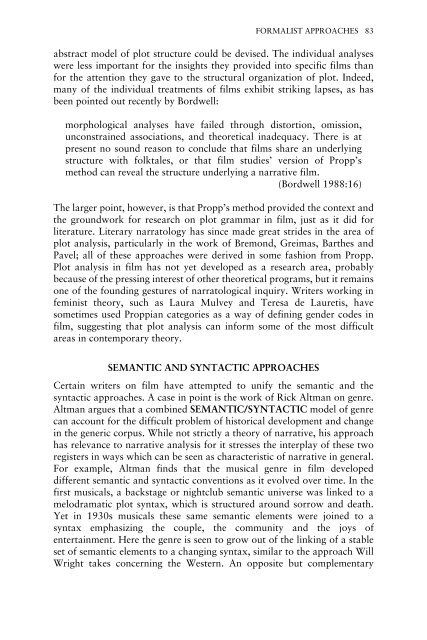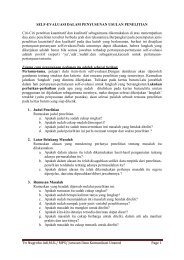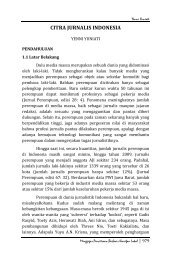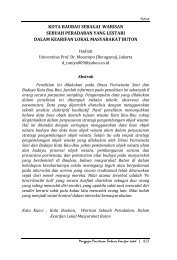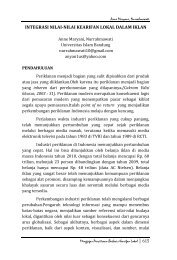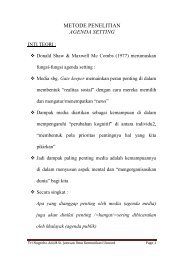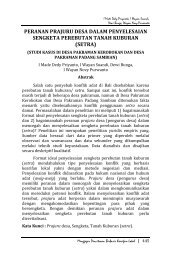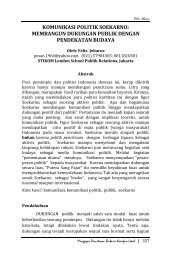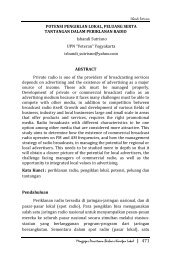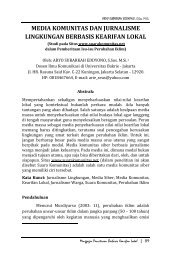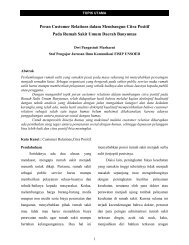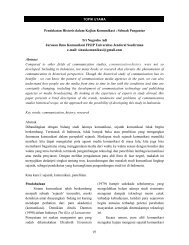New Vocabularies in Film Semiotics
New Vocabularies in Film Semiotics
New Vocabularies in Film Semiotics
Create successful ePaper yourself
Turn your PDF publications into a flip-book with our unique Google optimized e-Paper software.
FORMALIST APPROACHES 83<br />
abstract model of plot structure could be devised. The <strong>in</strong>dividual analyses<br />
were less important for the <strong>in</strong>sights they provided <strong>in</strong>to specific films than<br />
for the attention they gave to the structural organization of plot. Indeed,<br />
many of the <strong>in</strong>dividual treatments of films exhibit strik<strong>in</strong>g lapses, as has<br />
been po<strong>in</strong>ted out recently by Bordwell:<br />
morphological analyses have failed through distortion, omission,<br />
unconstra<strong>in</strong>ed associations, and theoretical <strong>in</strong>adequacy. There is at<br />
present no sound reason to conclude that films share an underly<strong>in</strong>g<br />
structure with folktales, or that film studies’ version of Propp’s<br />
method can reveal the structure underly<strong>in</strong>g a narrative film.<br />
(Bordwell 1988:16)<br />
The larger po<strong>in</strong>t, however, is that Propp’s method provided the context and<br />
the groundwork for research on plot grammar <strong>in</strong> film, just as it did for<br />
literature. Literary narratology has s<strong>in</strong>ce made great strides <strong>in</strong> the area of<br />
plot analysis, particularly <strong>in</strong> the work of Bremond, Greimas, Barthes and<br />
Pavel; all of these approaches were derived <strong>in</strong> some fashion from Propp.<br />
Plot analysis <strong>in</strong> film has not yet developed as a research area, probably<br />
because of the press<strong>in</strong>g <strong>in</strong>terest of other theoretical programs, but it rema<strong>in</strong>s<br />
one of the found<strong>in</strong>g gestures of narratological <strong>in</strong>quiry. Writers work<strong>in</strong>g <strong>in</strong><br />
fem<strong>in</strong>ist theory, such as Laura Mulvey and Teresa de Lauretis, have<br />
sometimes used Proppian categories as a way of def<strong>in</strong><strong>in</strong>g gender codes <strong>in</strong><br />
film, suggest<strong>in</strong>g that plot analysis can <strong>in</strong>form some of the most difficult<br />
areas <strong>in</strong> contemporary theory.<br />
SEMANTIC AND SYNTACTIC APPROACHES<br />
Certa<strong>in</strong> writers on film have attempted to unify the semantic and the<br />
syntactic approaches. A case <strong>in</strong> po<strong>in</strong>t is the work of Rick Altman on genre.<br />
Altman argues that a comb<strong>in</strong>ed SEMANTIC/SYNTACTIC model of genre<br />
can account for the difficult problem of historical development and change<br />
<strong>in</strong> the generic corpus. While not strictly a theory of narrative, his approach<br />
has relevance to narrative analysis for it stresses the <strong>in</strong>terplay of these two<br />
registers <strong>in</strong> ways which can be seen as characteristic of narrative <strong>in</strong> general.<br />
For example, Altman f<strong>in</strong>ds that the musical genre <strong>in</strong> film developed<br />
different semantic and syntactic conventions as it evolved over time. In the<br />
first musicals, a backstage or nightclub semantic universe was l<strong>in</strong>ked to a<br />
melodramatic plot syntax, which is structured around sorrow and death.<br />
Yet <strong>in</strong> 1930s musicals these same semantic elements were jo<strong>in</strong>ed to a<br />
syntax emphasiz<strong>in</strong>g the couple, the community and the joys of<br />
enterta<strong>in</strong>ment. Here the genre is seen to grow out of the l<strong>in</strong>k<strong>in</strong>g of a stable<br />
set of semantic elements to a chang<strong>in</strong>g syntax, similar to the approach Will<br />
Wright takes concern<strong>in</strong>g the Western. An opposite but complementary


